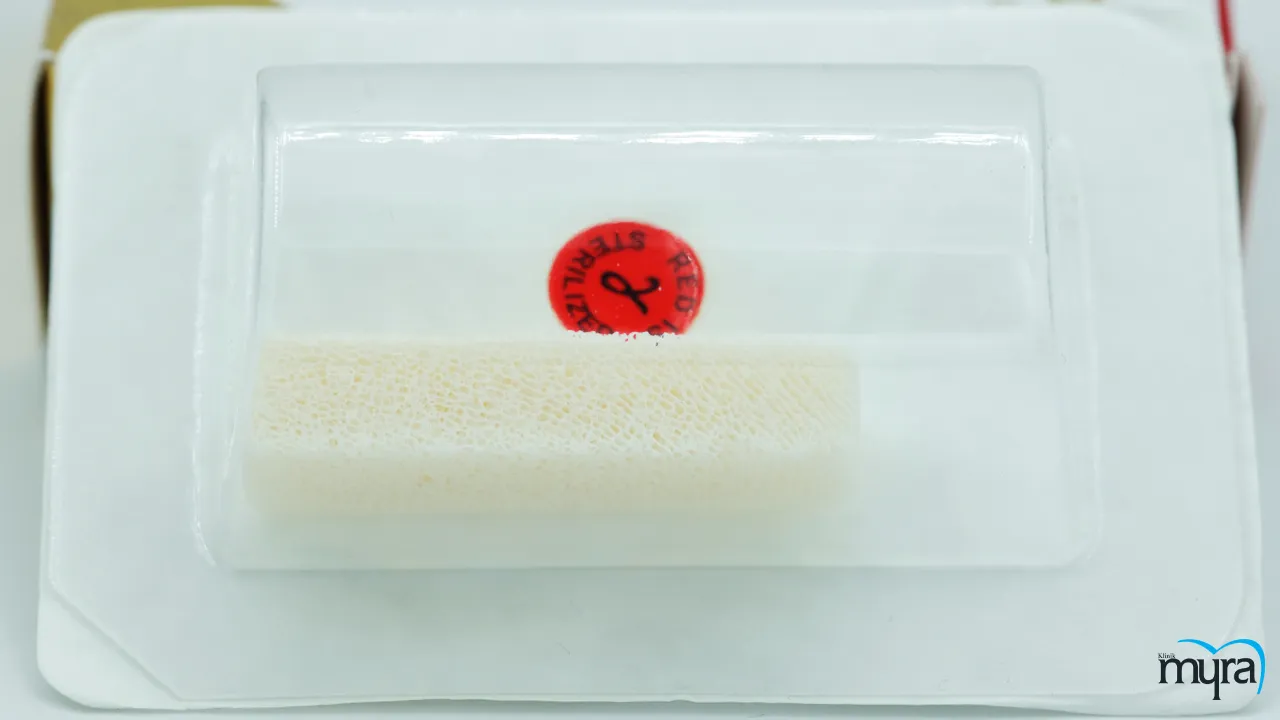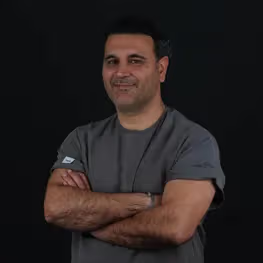Alloplast bone graft refers to a synthetic or artificial material that is used to replace or augment natural bone tissue. Alloplast Bone Grafting is commonly employed in various medical and dental fields, particularly as a bone graft for dental implants. The procedure aims to provide a stable foundation for dental implants by enhancing bone volume and density in the jawbone. Alloplast bone grafts are made from synthetic materials like hydroxyapatite, beta-tricalcium phosphate, or bioactive glasses. These materials are biocompatible and are made to look like natural bone. These materials promote new bone formation and integration with the surrounding tissues, facilitating the successful osseointegration of dental implants.
The benefits of alloplastic bone grafts are multifold. They eliminate the need for additional surgical sites for bone harvesting, reducing the complexity of the procedure and minimising donor site morbidity. Alloplast grafts offer predictable outcomes, providing consistent graft volume, stability, and integration with the recipient's bone. Predictability is important for dental implant cases, where the success and longevity of the implant are dependent on proper bone support. A bone graft before and after dental implant placement enhances the stability and success of the implant by providing sufficient bone volume and density for optimal osseointegration.
Alloplast bone grafting typically involves making an incision at the surgical site and preparing the recipient site by removing any damaged or non-viable bone tissue. The selected alloplast graft material, in the form of granules or blocks, is then carefully placed in the defect or augmentation area. The graft material serves as a scaffold for new bone formation, allowing the patient's bone cells to infiltrate and integrate with the graft. The graft material is gradually replaced by newly regenerated bone over time, creating a strong and stable foundation for dental implants.
The average cost of an alloplast bone graft procedure ranges from £200 to £2,500, or more. The cost varies depending on various factors, including the complexity of the case, the amount of graft material required, and the specific geographic location. The cost includes the surgical procedure, the graft material itself, anaesthesia fees, and any post-operative care. Consulting with a healthcare provider or oral surgeon is essential to getting an accurate estimate of the cost based on the individual’s specific needs and location.
What Is Alloplast Bone Graft Used For?
Listed below are uses of Alloplast Bone Grafts in the dental and medical fields.
- Dental Implant Placement: Alloplast bone grafts are used in dental implant methods to augment the jawbone when there is insufficient bone volume or density to support an implant. Osseointegration, the fusing of the dental implant with the surrounding bone, is facilitated by the graft material, which is put in regions where bone resorption or atrophy has occurred.
- Ridge Augmentation: Alloplast bone grafts find application in ridge augmentation procedures, aiming to address cases where the dimensions of the jawbone are inadequate to support dental restorations or implants. These graft materials are utilised to augment and refine the size and contour of the jawbone ridge, establishing a more conducive groundwork for the placement of prosthetic teeth or dental implants.
- Sinus Lift or Sinus Floor Elevation: The sinus lift procedure is employed when insufficiency of bone height in the posterior region of the upper jawbone (maxilla) impedes the placement of dental implants. Alloplast bone grafts are utilised to elevate the sinus membrane and occupy the void between the jawbone and the sinus cavity. The technique enables the implantation of dental implants in the augmented region.
- Socket Preservation: The underlying bone in the socket undergoes resorption and shrinkage when a tooth is extracted. Alloplast bone grafts are used after tooth extraction to preserve the socket and minimise bone loss. The graft material aids in maintaining the volume and density of the bone, creating a more favourable environment for future dental implant placement or prosthetic restoration.
- Periodontal Defect Treatment: Alloplast bone grafts are used in periodontal surgeries to regenerate bone tissue lost due to periodontal disease. The graft material is placed in areas with bone defects, encouraging the regeneration of periodontal tissues, and enhancing the support and stability of teeth affected by periodontal disease.
- Bone defect repair: Alloplast bone grafts are utilised to fill bone defects resulting from trauma, tumour resection, or congenital abnormalities. These grafts provide a scaffold for new bone formation, promoting the regeneration of bone tissue and restoring the structural integrity of the affected area.
- Bone augmentation: Alloplast graft materials are used to augment bone volume and density in situations where there is a lack of natural bone. It is necessary for dental implant placements, where the jawbone lacks adequate height or width to support an implant. Alloplast grafts help create a stable base for implants, improving the success and longevity of the prosthetic restoration.
- Maxillofacial reconstruction: Alloplast bone grafts are employed in reconstructive surgeries of the face and jaw, including facial trauma cases or congenital facial deformities. They are used to restore facial bone structure, correct deformities, and provide support for dental prosthetics or facial implants.
- Orthopaedic surgery: Alloplast bone grafts find applications in orthopaedic procedures, such as spinal fusion surgeries or fracture repairs. They assist in promoting bone healing, stabilising fractures, and restoring skeletal integrity.
- Aesthetic enhancements: Alloplast grafts are utilised for aesthetic procedures such as chin augmentation or contouring. They help reshape and enhance specific facial features, providing patients with improved facial harmony and balance.
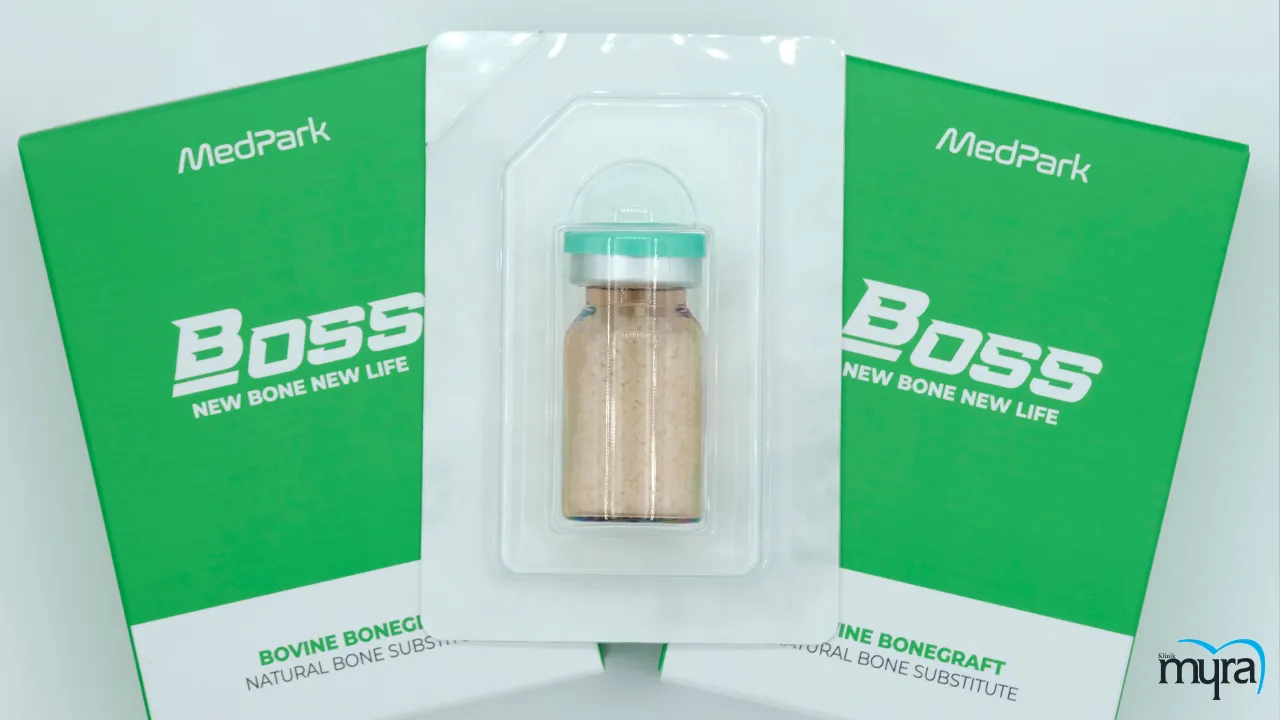
How Is the Alloplast Bone Graft Procedure Performed?
The alloplast bone graft procedure involves several steps to facilitate successful bone regeneration and integration of the graft material. The procedure is performed in an operating room under appropriate anaesthesia, following a systematic approach. The surgeon begins by making an incision at the surgical site after the patient is prepared for surgery and anaesthesia is administered. The incision provides access to the bone defect or the area requiring augmentation. The soft tissues are carefully separated, ensuring clear visibility and adequate exposure of the bone.
The next step is to prepare the graft site once the bone is exposed. The process involves meticulous cleaning and the removal of any damaged or non-viable bone tissue. The preparation of the graft site aims to create an optimal environment for graft integration and new bone formation. The selected alloplast graft material is prepared according to the manufacturer's instructions. The graft material comes in various forms, such as granules, blocks, or putty.
The surgeon places the graft material into the prepared defect or augmentation site, ensuring complete coverage and filling of the void. The surgeon uses additional fixation techniques to secure the graft in place and promote stability. It includes the use of screws, plates, wires, or sutures, depending on the specific requirements of the case.
The surgical site is closed using sutures or other appropriate closure techniques once the graft material is in position. The incision is closed in layers, ensuring proper alignment and healing of the soft tissues.
The patient is monitored in the recovery area to ensure a smooth transition from anaesthesia and to assess immediate post-operative comfort after the procedure. The healthcare team provides specific instructions regarding post-operative care, including pain management, wound care, and any restrictions or precautions.
The healing and integration of the alloplast graft material with the recipient's bone typically occur over several months. Regular follow-up appointments with the healthcare provider are scheduled to monitor the progress of healing, assess bone regeneration, and make any necessary adjustments to the treatment plan.
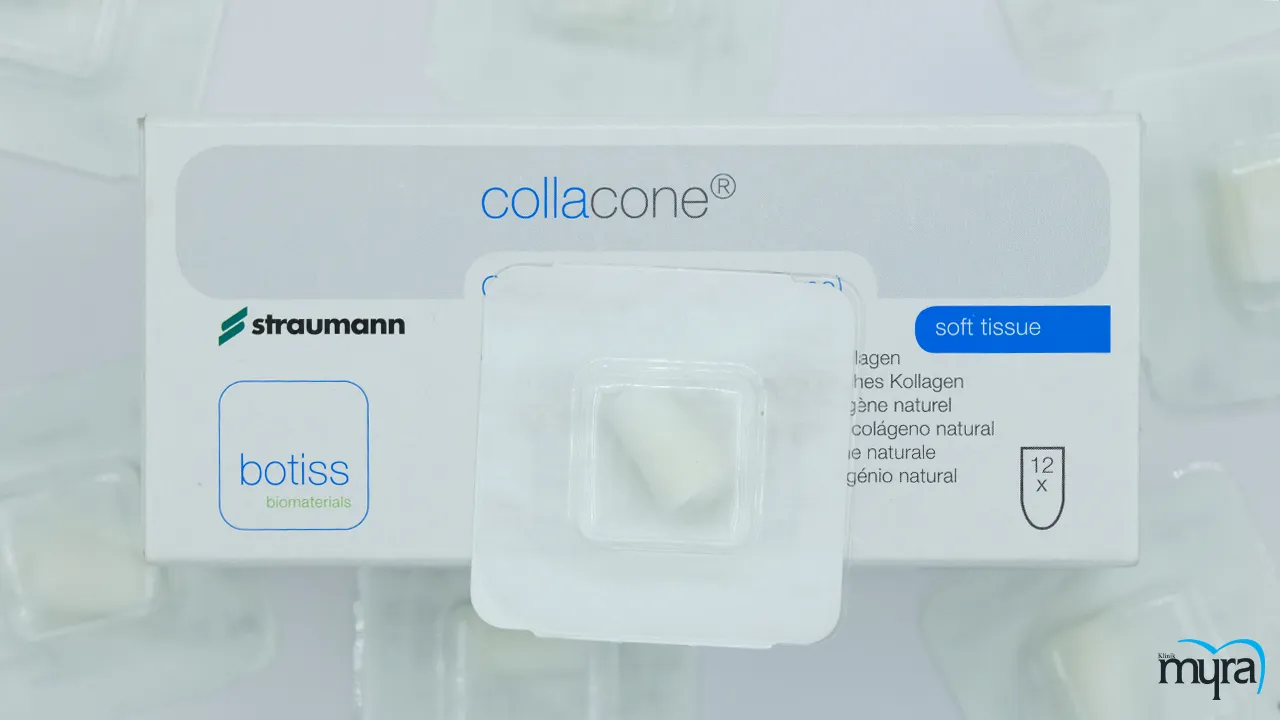
In Which Situations Is Alloplast Bone Graft Used?
Alloplast bone grafts find application in various clinical scenarios necessitating bone regeneration, augmentation, or structural reinforcement. Alloplast bone grafts present a flexible and adaptable approach for addressing many bone-related issues. Alloplast bone grafts are utilised to remedy bone defects arising from traumatic injuries, surgical tumour excisions, or congenital abnormalities. Such defects pose significant challenges to the structural stability, functional capacity, and aesthetic harmony of the afflicted anatomical site.
Alloplast grafts provide a synthetic scaffold that fills the void left by the defect, promoting new bone formation and facilitating the restoration of bone strength and function. Alloplast bone grafts are frequently used in dental implant procedures. Alloplast graft materials are employed to augment the bone and provide a stable foundation for dental implants in cases where the jawbone lacks adequate volume or has atrophied. It facilitates successful osseointegration, ensuring the long-term stability and functionality of dental restorations.
Alloplast bone grafts are used in cases where the availability of autogenous bone is limited or when patients have allergies or medical conditions that contraindicate the use of biological grafts. These synthetic graft materials eliminate the risk of allergic reactions and disease transmission associated with biological grafts, providing a safer alternative.
What are the Artificial Materials Used for Alloplast Bone Graft?
Listed below are the Artificial materials used for alloplast bone grafts.
- Hydroxyapatite (HA): HA is a synthetic form of calcium phosphate that resembles the mineral component of natural bone. It provides a scaffold for new bone formation and integrates well with the recipient's bone. HA grafts are biocompatible and have a long history of use in bone grafting procedures.
- Beta-Tricalcium Phosphate (β-TCP): β-TCP is another calcium phosphate compound that is used in alloplast bone grafting. It has a porous structure that promotes cellular infiltration and vascularisation. β-TCP is gradually resorbed by the body as new bone forms, allowing for eventual complete replacement by the patient's natural bone.
- Bioactive Glasses: Bioactive glasses are glass-based materials that contain a combination of calcium, silicon, and other elements. They possess bioactive properties, meaning they bond with the recipient's bone tissue and stimulate new bone growth. They have the ability to release biologically active ions, promoting bone regeneration and integration.
- Polymethylmethacrylate (PMMA): PMMA is a type of acrylic resin that is commonly used in orthopaedic and reconstructive surgeries. It is often used in a cement form to provide immediate structural support and stability to the graft site. New bone tissue gradually replaces the PMMA over time.
- Calcium Sulfate: Calcium sulfate-based materials, such as calcium sulphate hemihydrate (plaster of Paris) or calcium sulphate dihydrate, are used as alloplast grafts. These materials have osteoconductive properties, meaning they support the ingrowth of new bone cells and facilitate bone regeneration.
- Synthetic Polymer-Based Materials: Various synthetic polymers, such as poly(lactic acid) (PLA) and poly(glycolic acid) (PGA), and their copolymers, such as poly(lactic-co-glycolic acid) (PLGA), are used as alloplast graft materials. These polymers provide structural support and slowly degrade over time, allowing for the gradual replacement of the graft with new bone tissue.
- Titanium-Based Materials: Titanium-based alloplastic graft materials, such as porous titanium or titanium mesh, are used in specific cases where additional structural support or augmentation is required. These materials have high biocompatibility and are often used in combination with other graft materials.
What Are the Advantages of the Alloplast Bone Graft Procedure?
Listed below are the advantages of the alloplast bone graft procedure.
- Availability: Alloplast bone graft materials are readily available, eliminating the need for additional surgical sites for bone harvesting. It simplifies the procedure, reduces surgical time, and enhances surgical convenience.
- Predictable outcomes: Alloplast grafts have well-defined physical and chemical properties, allowing for predictable graft volume, stability, and integration with the recipient's bone. Predictability is valuable in cases where precise bone dimensions or stability are crucial for successful outcomes.
- Biocompatibility: Alloplast graft materials are designed to be biocompatible, meaning they are well-tolerated by the body and do not elicit adverse reactions. They are manufactured to mimic the natural properties of bone tissue and promote cellular attachment, proliferation, and new bone formation.
- Reduced risk of disease transmission: Alloplast grafts are synthetic materials, eliminating the risk of disease transmission that is associated with grafts derived from human or animal sources.
- Elimination of graft site morbidity: Alloplast grafts avoid additional surgical sites and associated donor site morbidity, unlike autogenous bone grafts, which require harvesting bone from a donor site. It reduces postoperative pain, complications, and healing time.
- Customizability: Alloplast graft materials are tailored to specific requirements, such as varying porosity, mechanical strength, and resorption rates. It allows surgeons to select grafts that best suit the patient's needs and optimise the grafting procedure.
- Simplified surgical technique: The use of alloplast grafts simplifies the surgical technique by reducing the complexity associated with bone harvesting, reducing surgical time, and potentially decreasing the risk of intraoperative complications.
- Cost-effectiveness: Alloplast graft materials offer cost advantages over autogenous or allogeneic grafts as they eliminate the need for additional surgical sites and associated procedures.
- Reduced postoperative pain: Alloplast grafts are designed to be biocompatible and well-tolerated, which contributes to reduced post-operative pain compared to procedures involving autogenous bone grafts.
- Versatility: Alloplast grafts are used in a wide range of bone grafting procedures, including reconstructive surgeries, augmentation procedures, and dental implant placements.
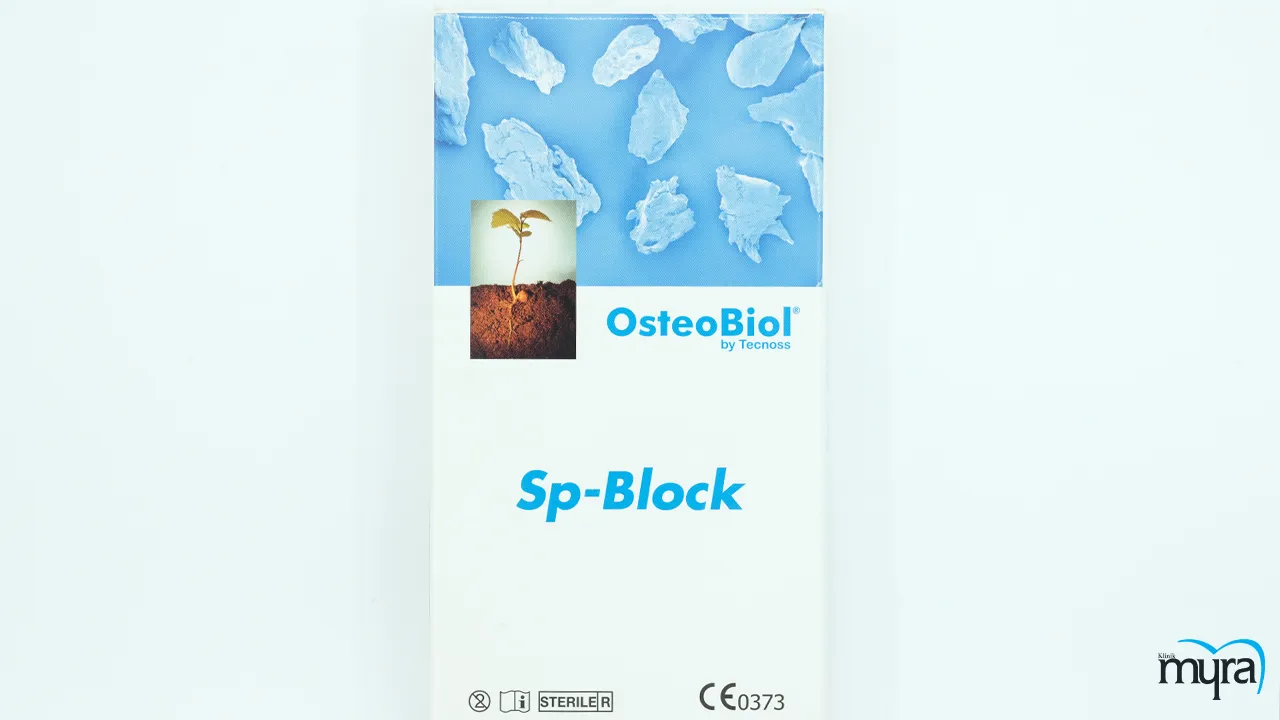
What Are the Risks of the Alloplast Bone Graft Procedure?
Listed below are the risks of the alloplast bone graft procedure.
- Infection: The risk of infection is present but low with alloplast bone grafts due to their synthetic nature and sterile manufacturing processes. Strict aseptic techniques during the procedure and adherence to proper post-operative wound care help minimise such a risk.
- Graft failure: The graft material does not integrate successfully with the recipient's bone or does not provide the desired stability or support in some cases. It leads to graft failure or insufficient bone regeneration. Factors such as inadequate blood supply, improper graft placement, or compromised healing capacity of the patient contribute to graft failure.
- Graft displacement or migration: Graft displacement, where the graft material moves out of its intended position, occurs due to factors such as inadequate fixation or insufficient stability of the graft. Graft displacement or migration compromises the overall success of the procedure and requires additional intervention or revision surgery.
- Allergic reactions: The risk of allergic reactions is low even if alloplast bone grafts are designed to be biocompatible. Patients with a known allergy to specific materials or components used in the alloplast graft must discuss such a situation with their healthcare provider prior to the procedure.
- Pain and discomfort: Pain and discomfort are common following an alloplast bone graft procedure. They are managed with prescribed pain medications and resolve gradually as the healing process progresses.
- Bleeding and hematoma formation: Bleeding during or after the procedure is another risk, along with hematoma formation, which is the collection of blood at the surgical site while proper surgical techniques are employed to control bleeding. Hematomas require drainage or further intervention to prevent complications.
- Nerve or tissue damage: There is a small risk of injury to nearby nerves, blood vessels, or surrounding tissues during the grafting procedure. Surgeons take precautions to minimise these risks, but nerve damage, altered sensation, or tissue trauma occur in rare cases.
- Adverse reactions to anaesthesia: Anaesthesia carries its risks, which include allergic reactions, breathing difficulties, or adverse effects on the cardiovascular system. These risks are minimal and are carefully managed by the anaesthesia team.
How Long Does Alloplast Bone Graft Process Take?
The length of the alloplast bone transplant procedure depends on several factors, including the size and location of the defect, the type of alloplastic material utilised, the patient's particular healing potential, and the exact surgical technique used.
The alloplast bone transplant procedure starts with surgically implanting the graft material into the defect site. The treatment is often conducted under anaesthesia and lasts from a few minutes to many hours, depending on the complexity of the case.
The healing process begins when the graft is placed. The graft material is integrated into the recipient's bone during the first phase. The graft material acts as a scaffold for cell migration and the production of new tissue. The integration phase takes several weeks to several months, during which time the body's natural healing systems strive to attach the graft to the surrounding bone.
The graft goes through a process of remodelling as new bone tissue forms, and the graft material is replaced over time. The remodelling phase’s duration varies based on several reasons, including the kind of graft material that was used and the size of the defect that was being addressed. The phase lasts for a few months to a year or more.
Regular follow-up consultations with a healthcare professional are required throughout the healing process. These appointments allow the healthcare professional to monitor the overall success of the alloplastic bone grafting treatment and ensure that the graft is successfully integrating into the patient's body.
What Is the Healing Process with Alloplast Bone Graft?
Alloplast bone transplants undergo intricate biological activities to integrate the graft material with the recipient's bone, induce new bone growth, and restore structural integrity. The body starts healing after grafting. Graft inflammation begins with inflammatory cells attracting and regenerating cells by releasing growth factors and cytokines. Inflammation is essential to recovery.
The alloplastic graft acts as a scaffold for cell infiltration during the early stages of recovery. Mesenchymal cells migrate into the graft material, including osteoblasts (bone-forming cells), fibroblasts, and endothelial cells. These cells adhere to the graft's surface and initiate the processes of angiogenesis (the production of new blood vessels) and osteogenesis (the formation of new bone tissue).
The graft material undergoes remodelling as the healing process advances. Osteoblasts within the graft material deposit new bone matrix, while osteoclasts (bone resorption cells) break down and modify the graft. The remodelling phase aids in the integration of the graft with the recipient's bone and contributes to the graft site's long-term stability.
Alloplast bone grafts recover over several months. The bone graft gradually integrates over time. The graft material, defect size and location, patient health, and post-operative care affect healing. A healthcare professional's close monitoring and follow-up are critical during the healing process.
What Is the Success Rate of Alloplast Bone Graft?
Dental implant proceduresincorporating alloplastic bone grafts for jawbone augmentation exhibit success rates ranging from 80% to 95%. These grafts establish a sturdy foundation for dental implants and fostering the achievement of successful osseointegration, wherein the implant seamlessly merges with the surrounding bone.
The success rate of alloplast bone grafts is contingent upon several factors, such as the specific type of graft material employed, the size and location of the bone defect, the patient's overall health condition, and the intricacies of the surgical technique employed.
Who Are the Suitable Candidates for the Alloplast Bone Graft Procedure?
The suitability of candidates for the alloplast bone graft procedure depends on various factors and requires a comprehensive evaluation by a qualified healthcare professional. Alloplast bone grafts are considered for individuals who have bone defects resulting from trauma, tumour resection, or congenital abnormalities. These defects lead to structural instability, functional impairments, or aesthetic concerns. Alloplastic bone grafts provide a solution by filling the void left by the defect and promoting the regeneration of new bone, restoring the integrity and function of the affected area.
Alloplast bone grafts are suitable for patients who have insufficient availability of autogenous bone. Autogenous bone grafts, which involve using the patient's bone, are commonly considered the gold standard for grafting procedures. There is a limited supply of healthy bone for grafting purposes in some cases. It occurs due to previous bone harvesting procedures, inadequate bone volume, or poor bone quality. Alloplast bone grafts serve as an alternative option as they are readily available and effectively augment or replace the patient's own bone.
Another consideration is for patients with allergies or medical conditions that make the use of autogenous or allogeneic (donor-derived) bone grafts impractical or risky. Alloplast bone grafts offer a non-biological option as they are synthetic materials, eliminating the risk of allergic reactions or disease transmission associated with biological grafts. It makes them a suitable choice for individuals with known allergies, immune system disorders, or medical conditions that contraindicate the use of biological grafts.
The simplicity and convenience of alloplast bone grafts make them appealing to certain patients. These grafts are readily available, eliminating the need for an additional surgical site for bone harvesting. It simplifies the procedure, reduces surgical time, and leads to quicker patient recovery. Alloplast bone grafts are beneficial for individuals who prefer a less invasive approach or need to expedite their healing and rehabilitation process.
Alloplast bone grafts provide predictable outcomes due to their well-defined physical and chemical properties. It ensures consistency in terms of graft volume, stability, and integration with the surrounding bone. Predictability is crucial in cases where specific bone dimensions or stability are vital for successful outcomes, such as reconstructive surgeries or implant placements.
Cost considerations influence the suitability of alloplast bone grafts. These graft materials offer cost advantages over autogenous or allogeneic bone grafts, as they eliminate the need for an additional surgical site for bone harvesting, reducing surgical complexity and associated costs. It makes alloplast bone grafts a more cost-effective option, especially when the availability of autogenous or allogeneic grafts is limited or when multiple grafting procedures are required.
How does Alloplast bone graft compared to dental veneers in use, durability, and oral health?
Alloplast bone grafts and dental veneers are utilised in dentistry, but serve different purposes and have distinct characteristics when it comes to use, durability, and impact on oral health. Alloplast bone grafts are used in cases where bone regeneration, augmentation or structural support is required. They are employed to address bone defects resulting from trauma, tumour resection, or congenital abnormalities.
Alloplast bone grafts provide a versatile solution for restoring the structural integrity and functionality of the affected area. Their use requires surgical intervention, and the success of the graft relies on the body's ability to integrate and regenerate bone tissue over time. Alloplast bone grafts are designed to be biocompatible, and their durability depends on factors such as the type of material used, the patient's overall health, and proper postoperative care. Their success depends on the individual's healing response and the maintenance of good oral hygiene, while they provide long-term stability and support.
Dental veneers are thin shells made of porcelain or composite resin that are bonded to the front surface of natural teeth. They are used for cosmetic purposes, aiming to improve the appearance of teeth by altering their shape, size, colour, or alignment. Dental veneers address issues such as stained or discoloured teeth, chipped or worn enamel, or minor tooth misalignments. Dental veneers are not involved in bone regeneration or structural support, unlike alloplast bone grafts. Veneer application is less invasive, involving tooth preparation and bonding of the veneer. Veneers are durable and withstand normal biting and chewing forces, but they require occasional maintenance or replacement over time due to wear or damage. Remember that dental veneers do not solve underlying dental issues or severe tooth damage.
Alloplast bone grafts and dental veneers have different uses, durability, and impacts on oral health. Alloplast bone grafts focus on bone regeneration and structural support, requiring surgical intervention and providing long-term stability. Dental veneers are cosmetic enhancements for teeth, requiring minimal invasion and providing aesthetic improvements. The two procedures contribute to oral health in their own ways, with alloplast bone grafts addressing underlying bone issues and dental veneers improving tooth alignment and aesthetics. The choice between the two depends on the specific needs and goals of each patient, as determined through consultation with a dental professional.
Which Bone Problems Can Be Treated With Alloplast Bone Graft?
Listed below are Bone Problems that are Treated with Alloplast Bone Graft.
- Bone defects: Alloplastic bone grafts are frequently employed in the augmentation of bone defects caused by traumatic injuries, surgical tumour excisions, or congenital anomalies. Their primary function lies in the restoration of the structural integrity of the bone, thereby facilitating the healing process.
- Fractures: Alloplastic bone grafts serve as an adjunctive measure to stabilise fractures and facilitate bone healing in specific instances. These grafts provide mechanical support and function as scaffolds, promoting the development of new bone tissue.
- Bone loss: Alloplastic bone grafts are used to address bone loss caused by conditions such as osteomyelitis (bone infection), avascular necrosis (loss of blood supply to the bone), or periodontal disease. The graft material fills the void left by the bone loss and promotes the regeneration of new bone.
- Dental implants: Alloplastic bone grafts are utilised in dental implant procedures. They are used to augment the jawbone and provide a stable foundation for dental implants when the natural bone is insufficient or has atrophied.
- Maxillofacial reconstruction: Alloplastic bone grafts are employed in reconstructive surgeries of the face and jaw. They help restore the facial bone structure, correct deformities, and provide support for dental prosthetics.
What are the Differences Between Alloplast Bone Graft and Other Bone Grafting Methods?
Alloplasts and other bone grafting methods are utilised to encourage bone regeneration and enhance the healing of tissue during various medical treatments. Alloplast bone grafts are synthetic or artificial and are used to replace or augment natural bone tissue. It is known as a bone substitute. Alloplasts are made of biocompatible materials like ceramics, polymers, or metals, which give structural support and serve as a scaffold for the creation of new bone.
Autografts, allografts, and xenografts are some types of bone graft procedures. Bone tissue is harvested from a different area of the patient's body and then transplanted into the affected region when a patient receives an autograft. Some patients are wondering, What is autograft tissue? Autograft tissue is tissue derived from the patient itself and is used as a graft in various medical procedures. Tissue is harvested from one area of the patient's body, known as the donor site, and transferred to another area, called the recipient site, which needs reconstruction or therapy. The procedure has many benefits, such as utilising the patient’s bone cells and growth factors, increasing the effectiveness of the graft’s integration and the patient’s healing. It necessitates additional surgical treatment and carries with it the risk of morbidity at the donor site.
Allografts require the use of bone tissue obtained from a human donor. The bone tissue is treated and sterilised prior to transplantation. The procedure avoids a second surgical site, but it comes with the danger of immunological rejection and disease transmission. Different screening protocols are in place to help reduce these risks. Bone tissue from animal sources, often bovine or pig, is used in xenografts after undergoing intensive processing to eliminate organic components and reduce the likelihood of an immunological response.
Alloplastic bone grafts have many benefits over other types of bone transplants, including autografts, allografts, and xenografts. They remove the necessity of a donor site, which cuts down on the amount of time needed for surgery and the risks of problems connected with extra treatments. It eliminates the requirement that tissue be matched or harvested from other sources because alloplast grafts are widely available. The materials that are utilised in alloplasts are customised to individual requirements, which provides both mechanical stability and a regulated release of growth factors to improve bone regeneration. The use of alloplast grafts results in a reduced biological response, which necessitates longer healing times and additional monitoring when compared to natural bone grafts.
